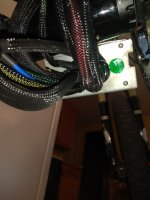t_tberg
100 W
The title pretty much says it all. I've been using an xt-90 antispark connection on one of my 20s packs for about a year. It failed a while back (a few weeks after I had started charing to 4.2v/cell from 4.1v). The contacts appear to be clean on both the receptickle and the dingus end. Any thoughts boys?


